![A transport of Jewish prisoners marches through the snow from the Bauschovitz train station to Theresienstadt. [LCID: 69720]](https://encyclopedia.ushmm.org/images/large/781755a6-1ba5-4d8e-8b2b-9f25bdf3687f.jpg)
Browse an alphabetical list of film clips that feature important events before, during, and after the Holocaust and World War II. These clips include home movies, propaganda films, newsreels, and more.
<< Previous | Displaying results 1-17 of 17 for "Film" | Next >>
[This video is silent]German forces entered Warsaw in September 1939. The next month, they ordered the establishment of a Jewish council (Judenrat) in the city. They chose Adam Czerniakow, a member of Warsaw's old Jewish Community Council, to lead it. Here, for German newsreels, a German propaganda company stages a meeting between Czerniakow and petitioners from the ghetto. The Germans expected Czerniakow to implement German orders, including demands for forced labor and confiscations of Jewish-owned…
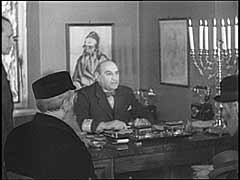
[This video is silent]The Dachau concentration camp, northwest of Munich, Germany, was the first regular concentration camp the Nazis established in 1933. About twelve years later, on April 29, 1945, US armed forces liberated the camp. There were some 30,000 starving prisoners in the camp at the time. This footage shows an aerial view of the camp and the entrance gate to the prisoner compound.
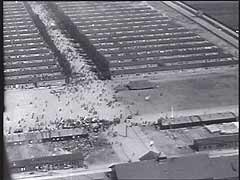
The Treaty of Versailles, imposed on Germany following its defeat in World War I, declared Danzig to be a free city jointly administered by Poland and the League of Nations. Germany bitterly resented the loss of this largely German city, which was also an important port on the Baltic Sea. The return of Danzig to Germany became a central focus of Adolf Hitler's foreign policy. Germany invaded Poland in September 1939. After the invasion of Poland, Germany unilaterally annexed Danzig. This German newsreel…
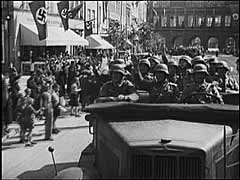
A pogrom took place in Kielce, Poland, in July 1946. Forty-two Jews were massacred and about 50 more were wounded. The event touched off a mass migration of hundreds of thousands of Jews from Poland and other countries of eastern and central Europe. This clip shows Jewish refugees, survivors of the pogrom, waiting to leave Poland and crossing into Czechoslovakia.
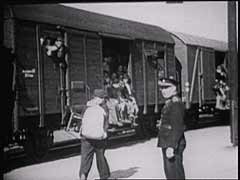
[This video is silent]There were three large forced-labor camps in Hannover, a large industrial city in northern Germany. All three of the camps were part of the Neuengamme concentration camp system. In early April 1945, American forces entered Hannover and freed the surviving prisoners. The American Signal Corps filmed one of the Hannover camps soon after liberation. American forces fed survivors of the camp and required German civilians to help bury the dead.
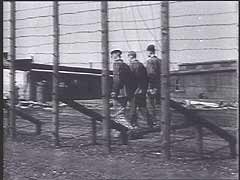
[This video is silent]An agreement signed at the Munich conference of September 1938 ceded the German-speaking Sudetenland region of Czechoslovakia to Germany. The agreement was reached between Germany, Italy, Britain, and France. Czechoslovakia was not permitted to attend the conference. In March 1939, six months after signing the Munich agreement, Hitler violated the agreement and destroyed the Czech state.
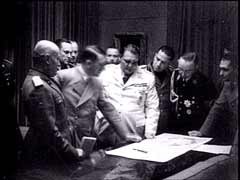
After the defeat of France in June 1940, Germany moved to gain air superiority over Great Britain as a prelude to an invasion of Britain. During almost nightly German air raids (known as "the Blitz") on London, the civilian population of the city sought refuge--as shown in this footage--in air raid shelters and in London's subway system (called the "Underground" or the "Tube"). Despite months of air attacks, Germany was not able to destroy Britain's Royal Air Force (RAF). In the fall of 1940, the invasion…
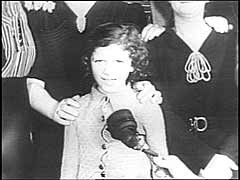
The Junkers (Ju) 87, known as the "Stuka," spearheaded the Blitzkrieg ("lightning war") attacks that were decisive in the western campaign in 1940. Stuka dive-bombers closely supported German forces on the ground. They destroyed enemy strong points, aircraft, and airfields, and spread panic in rear areas. Although slow and easily shot down by Allied fighters, the Stukas proved devastatingly effective in the German invasions of Poland and western Europe, where Germany enjoyed air superiority. Stuka…
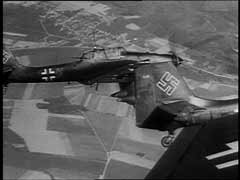
Defendant Albert Speer making his closing statement in the Nuremberg courtroom.
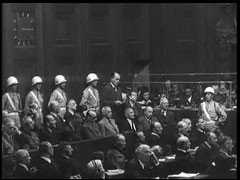
Defendant Albert Speer is sworn in at the International Military Tribunal.
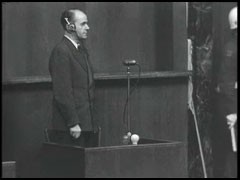
Albert Speer gives testimony at the International Military Tribunal. In 1942 Speer was named Minister of Armaments and Munitions, assuming significant responsibility for the German war economy. In this position, Speer used millions of forced laborers to raise economic production.
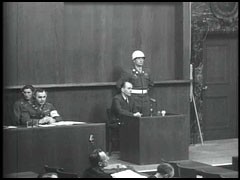
Most Allied prisoners of war (POWs) were treated well compared to inmates of concentration camps. But, as former Dutch POW Captain Boullard explains here at Dachau concentration camp, some were subject to severe beatings and forced to work in harsh labor assignments.
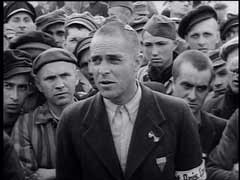
The German western campaign in May 1940 decisively defeated the British and French forces arrayed against it. By the end of May, the Allies began the withdrawal of British and French forces from the Continent to prevent their surrender or destruction. The evacuation effort centered on the French coastal town of Dunkirk. As German forces completed their conquest of France, more than 1,000 vessels--including small civilian yachts and fishing boats--ferried Allied forces across the English Channel to Great…
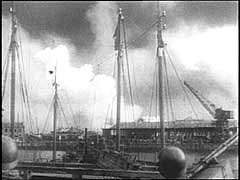
German troops entered Austria on March 12, 1938. The annexation of Austria to Germany was proclaimed on March 13, 1938. In this German newsreel footage, Austrians express overwhelming enthusiasm for the Nazi takeover of their country.
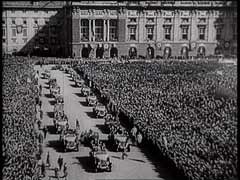
In an attempt to prevent the German annexation of Austria, Austrian chancellor Kurt von Schuschnigg called a plebiscite (referendum) on Austrian independence. On March 11, 1938, the Germans pressured Schuschnigg to cancel the plebiscite and resign. This German newsreel footage from March and April 1938 served as propaganda for the Nazi annexation of Austria. It begins with images of pro-Nazi residents in Graz expressing their opposition to Schuschnigg's plebiscite. It also includes footage after…
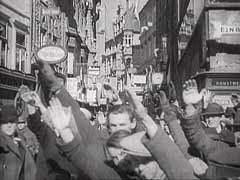
Adolf Hitler became chancellor of Germany in January 1933. Soon thereafter, terror actions against opponents of Nazism began: Jews were a major target in these campaigns. Many Jews were subjected to public humiliation or arrest, and others were forced to quit their posts. Anti-Jewish measures climaxed with the April 1, 1933, boycott of Jewish-owned businesses. This footage depicts a Jewish anti-Nazi march in Chicago.
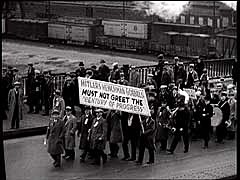
The American Jewish Congress was among the first groups in the United States to oppose Nazism. It held a mass rally as early as March 1933, soon after Hitler rose to power in Germany, and continued to hold rallies throughout the war years. The American Jewish Congress organized this anti-Nazi march through Lower Manhattan. The event coincided with book burning in Germany.
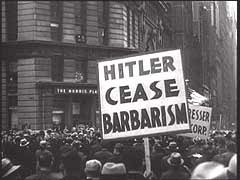
We would like to thank Crown Family Philanthropies, Abe and Ida Cooper Foundation, the Claims Conference, EVZ, and BMF for supporting the ongoing work to create content and resources for the Holocaust Encyclopedia. View the list of donor acknowledgement.